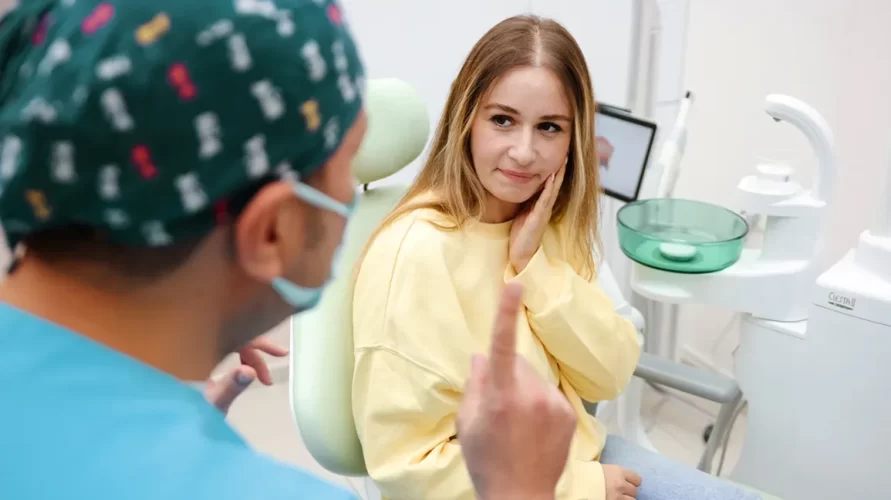The temporomandibular joint (TMJ) acts as a gliding hinge, connecting your jawbone to your skull. Any dysfunction can lead to pain and discomfort. Most often TMJ dysfunction is caused due to arthritis, injury, usual wear and tear, or bruxism (excessive teeth grinding). This can negatively impact your quality of life. Thus, early detection and prompt treatment is crucial.
Dentists offer extensive TMJ treatment in Los Gatos to provide effective and long-lasting relief from TMJ disorders (TMD). Read on to explore the potential treatment options for TMD.
Exploring the causes of TMJ disorder
There is no singular cause of TMJ disorder, rather it can be a result of a combination of factors.
The causes may include:
- Trauma to the jaw (dislocated, or fractured jaw)
- Bruxism (abnormal teeth grinding or clenching)
- Arthritis of the jaw bone (inflammation)
- Malocclusion (when your upper and lower teeth don’t fit usually when in contact)
- Chronic stress
- Connective tissue disease
Some useful diagnostic tests to detect TMJ symptoms
Your dentist will evaluate your symptoms and order radiographic imaging of your jaw. These include dental X-rays, CT (Computed Tomography) scan, or an MRI (Magnetic Resonance Imaging).
If needed, a special test known as jaw tracing will be recommended to assess your jaw functions. This helps the dentist to plan the further course of action.
Let us dive into the treatment options to correct TMJ disorders
TMJ treatment depends on the underlying cause and the severity of the pain. Your dentist will initially evaluate your condition and assess your individual requirement before designing a customized treatment plan.
This may include:
Medications
Prescription and OTC (over-the-counter) medications help ease the pain.
These include:
-
-
- NSAIDs (non-steroidal anti-inflammatory drugs)
- Painkillers
- Muscle relaxants
-
Physical therapy
-
- This includes ultrasound, moist heat or ice therapy.
Splint therapy
-
- This is a nonsurgical treatment option, also known as oral appliance therapy.
- These dental devices help ease pain by relieving the pressure from the muscles surrounding the joint allowing them to relax.
Orthodontic intervention
-
- Orthodontists can help correct malocclusions such as overbite, underbite or open bite.
- This therapy uses orthodontic appliances such as braces and palatal expanders to reduce TMJ muscle spasms.
- These devices provide better teeth alignment.
Full mouth rehabilitation
- This may entail placing artificial prostheses such as crowns or bridges in combination with orthodontic therapy.
A note to remember
TMJ dysfunction could cause debilitating symptoms negatively impacting your quality of life. But you do not have to suffer from it all your life. If the symptoms keep you from enjoying your life, discuss it with your dentist. They can find the cause and offer treatment that suits you best.

